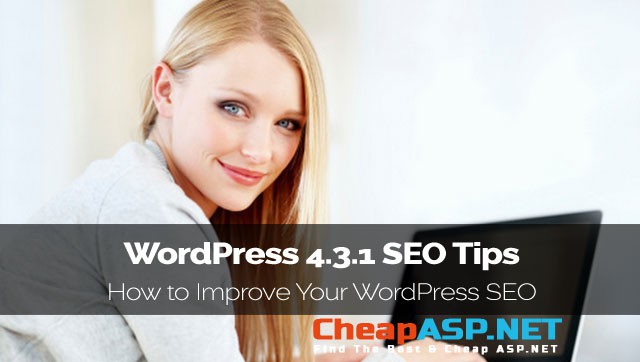WordPress 4.3.1 SEO Tips – How to Improve Your WordPress SEO
WordPress is one of the most popular content management systems available today. The latest version of WordPress is 3.4.1. As someone who codes within WordPress on a daily basis, it’s easy for me to sell WordPress to clients. They are assured that the CMS platform is future proof – at least for the foreseeable future. However, downloading and installing WordPress isn’t enough to make the site successful for SEO, security, and performance. But the following basic tips will improve your WordPress site for SEO and the user experience. Although most of you reading this post already have a live WordPress site, this post will begin at the point just after a self-hosted five-minute install.
Use Google Analytics
You should never manage a site without some form of tracking. Google Analytics is free and so easy to implement that there’s no excuse not to use it.
Create a new analytics profile, and then install Google Analytics for WordPress by Joost de Valk. This plugin makes it easy for you to connect your profile to WordPress without the need to use copy and paste (and you can also enter the tracking code manually). Once connected, there are numerous settings that you should tweak at your discretion.
Review and optimize your theme
This is more important for you if you’re using a not-so-popular free theme. But even paid ones costing more than a hundred bucks can have complicated code, which is bad for site performance and SEO. There’s not much you can do if you’re not a techie guy, but if you are, you can tell if your theme is performance oriented or not by just taking a look at its code. A highly feature rich theme that makes more queries to the server while loading a page isn’t suited for a site that doesn’t need that level of functionality. If you love your theme and it’s fairly good except in a few areas, you can patch it up according to your requirements or have a developer do it for you.
Block Spam Comments
New versions of WordPress do a very good job in nofollowing links posted by users in comments. You can prevent spam comments from getting posted in the first place implementing these 3 simple methods.
So, why are spam comments bad for your blog?They don’t contribute anything to the topic and annoy legit users. In that case, there’s a chance that the page will be flagged as spam by search engines and your site will get penalized.
While Writing New Ones, Link to Your Old Posts
Internal linking has been and still is a very important way to feed search engines more relevant content on your website. It works as a virtual map of related posts on your site and makes navigation within your site easier for both users and bots. Linking to your old but related posts manually using manually chosen anchor text performs better than linking to old posts using a ‘related posts’ plugin which displays full titles of your old posts while linking to them. In addition to SEO, it also helps your old posts get more traffic.
Customize Media Settings
By default, WordPress provides settings on how to deal with image thumbnails. I’m not a fan of the default settings – I like to set my own dimensions for all three available image sizes (thumbnail, medium and large) per WordPress install; and more importantly I like my thumbnails not to be cropped exactly to the dimensions. I don’t like this as, more often that not, I want to upload images that maintain their proportion when resized.
To change these settings, simply navigate to Settings -> Media and change the settings to how you like to see your site deal with thumbnails.
Switch to A Better Web Host
If your website remains slow even after optimizing the code, using a caching plugin, and a CDN, it’s time to move to a better web host with faster servers. You might contact your host and ask them why your website is performing slowly on their server, but if they fail to provide you a specific reason, you can be sure that their servers are slow in the first place.
While choosing a new web host, make sure you don’t make the same common mistakes that most beginners do. A few of my favourite web hosts are: ASPHostPortal.com, UKWindowsHostASP.NET, DiscountService.biz. I recently reviewed ASPHostPortal.com and in my opinion they’re the best shared host out there out of the large lot of hosts I’ve tested. If you’re curious as to why I never had to switch to another host.
A great place to look for a new web host is WebHostingTalk. Their members are very helpful and new members get proper guidance on choosing a web host.

